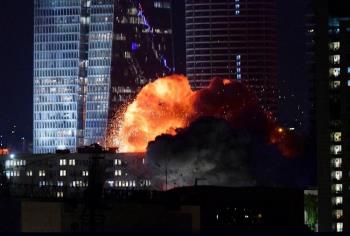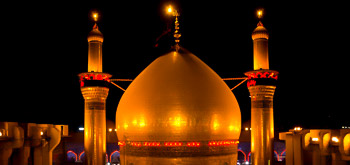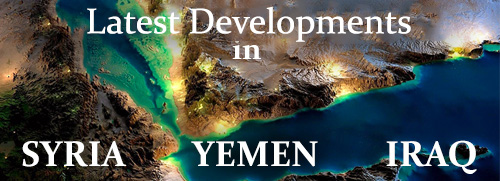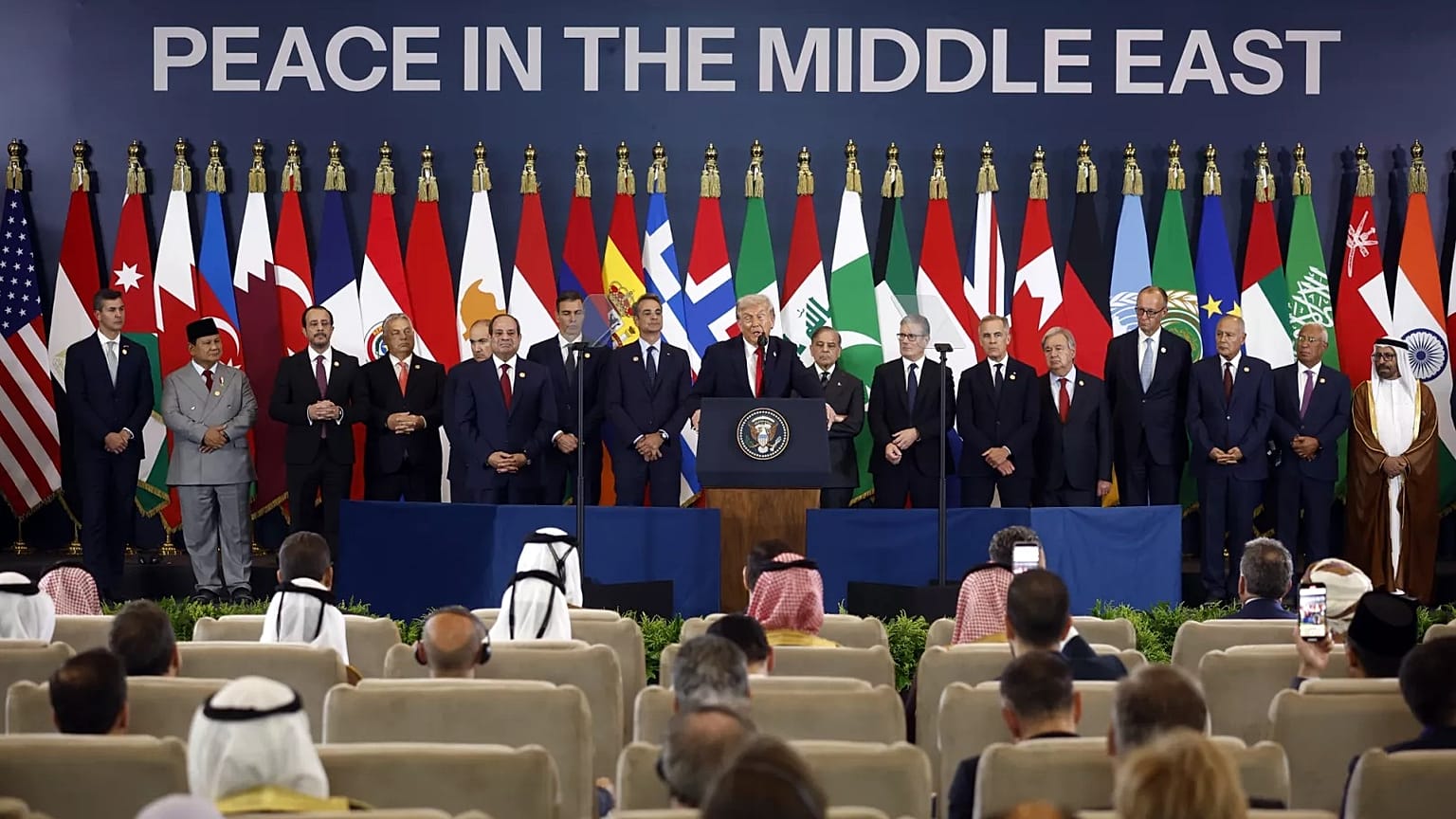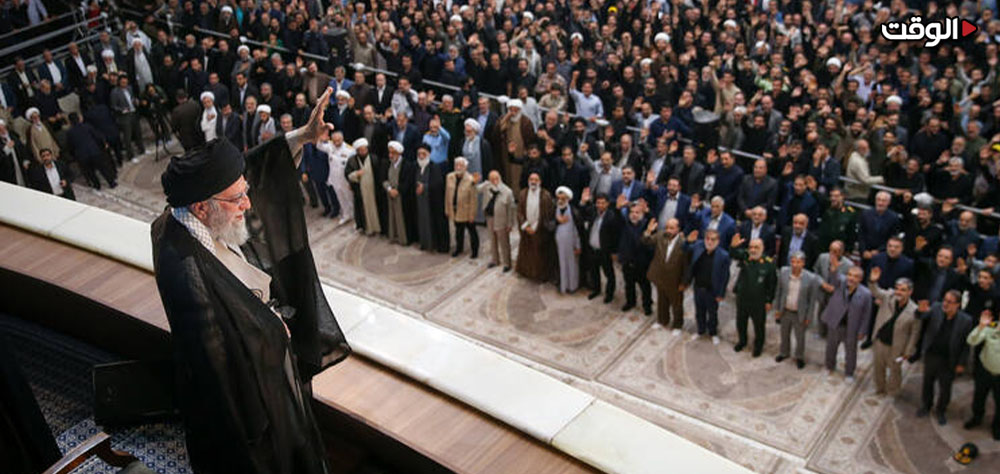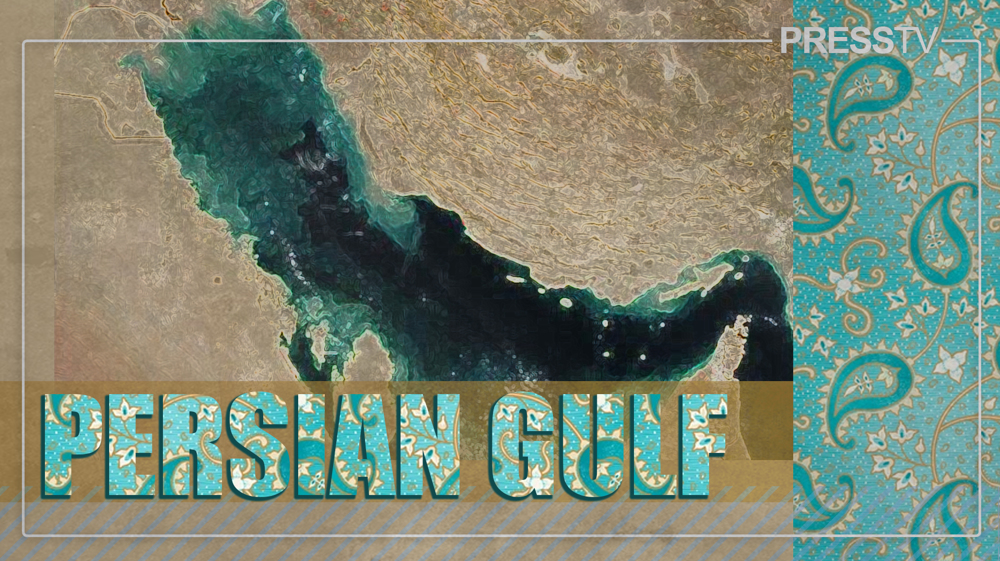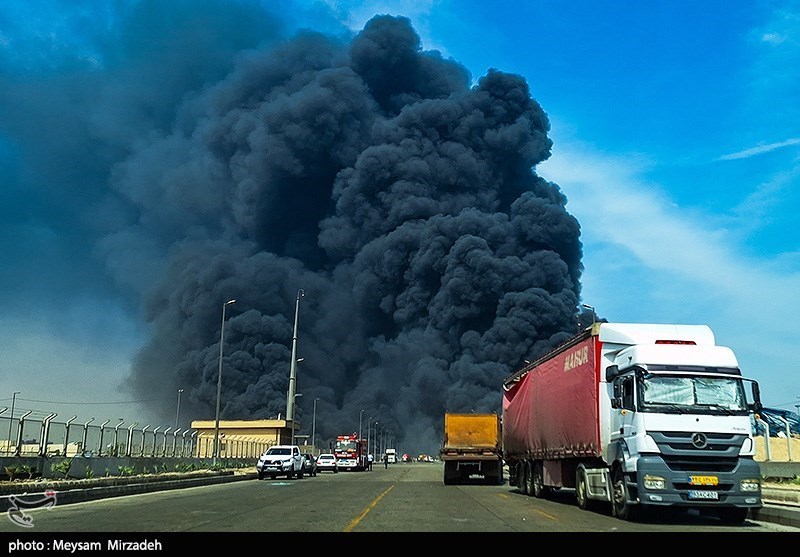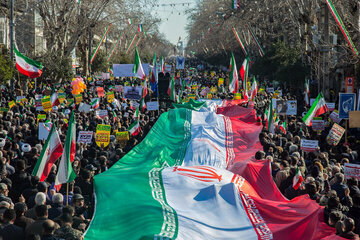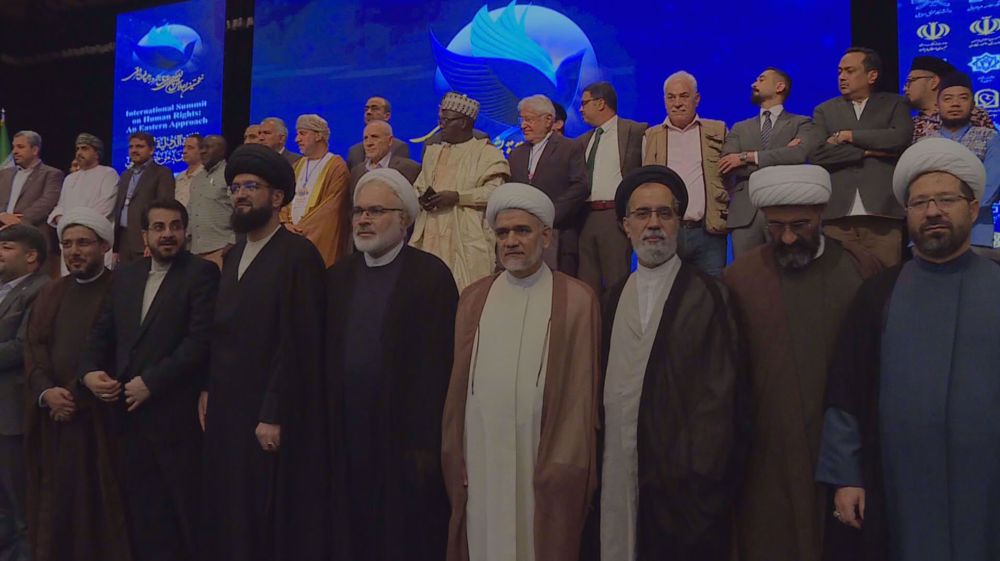Alwaght- The Sharm El-Sheikh summit that was seemingly to sign the ceasefire agreement between Hamas and Israel was actually a scene of long-running show of the American-style peace in West Asia. The summit, attended by the US President Donald Trump and over 20 world leaders including the Arab countries, was held in a high-profile atmosphere and concluded in an ostensibly pro-peace but actually pro-Israeli statement.
Two years of relentless genocidal war against Gaza had left widespread devastation and a heavy human toll, and public opinion expected the Sharm El-Sheikh conference to pave the way for justice and an end to the occupation. However, the remarks by Trump and the terms of the final statement made it clear that this summit was not convened to end the plight of the Palestinians, but to reframe the interests of Tel Aviv within a new strategic framework.
Everything in Sharm El-Sheikh in favor of Israelis
In tone and structure, the Sharm El-Sheikh declaration strikingly echoed the 1993 Oslo Accords. That deal, signed with a historic handshake between Israeli Prime Minister Yitzhak Rabin and Palestinian Authority President Yasser Arafat under the watch of President Bill Clinton, failed over three decades to produce an independent Palestinian state. Instead, it accelerated Israel's settlement expansion and the Judaization of Al-Quds (Jerusalem).
Now, 32 years later, another American president has placed a document on the table whose every term is calibrated to benefit the Israelis, once again ignoring the Palestinian right to self-determination.
What unfolded in Sharm El-Sheikh was, say some analysts, the second version of Oslo Accords, a reheated version of the old formula, now repackaged as the "Trump Peace Plan." The new deal parrots concepts like "lasting peace" and "shared security," yet its text makes no mention of fundamental Palestinian rights; the right of return for refugees, a halt to settlement building, the 1967 borders, or, most critically, the establishment of a Palestinian state.
The declaration praises the "process of normalizing relations between Arab states and Israel, begun by Anwar Sadat," and concludes by stressing that the Israeli and Palestinian peoples should live side-by-side in health and peace.
Critically, however, the document offers no tangible roadmap. Even the flawed Oslo Accords outlined a five-year plan for establishing a Palestinian authority and addressing core final-status issues like Al-Quds, refugees, settlements, and borders. The Sharm El-Sheikh statement provides no such path, signaling that after decades of failed diplomacy, the US and its Arab partners have decided not to solve the conflict, but to erase it from the agenda.
Trump himself set the tone for the summit. Speaking in the occupied territories, he said: "I have come to the Middle East to deliver security and peace for Israel", a statement that alone revealed the conference's true aim. He has repeatedly asserted that the security of the Israeli regime is the cornerstone of Washington's foreign policy, and in Sharm El-Sheikh, he cemented that principle into a formal agreement.
In essence, with Tel Aviv's leaders absent, Trump single-handedly shouldered the burden for the Israelis. As The Guardian put it, he "sought to single-handedly salvage Israel's damaged prestige." From Trump's perspective, the Palestinians no longer have a sovereign claim to their historic lands; their role in his new order is merely that of a non-sovereign population compelled to accept a new reality.
This is while no plan that deprives the Palestinian nation of their natural right to self-determination cannot being about sustainable and legitimate peace. Though ceasefire and delivery of aid is a positive move, these step do not mean a true political headway is made.
Completing normalization project
Trump's approach at Sharm El-Sheikh was the logical culmination of a process he began during his first term, a strategy marked by moving the US embassy to Al-Quds, recognizing Israeli sovereignty over the occupied Golan Heights, and brokering the Abraham Accords between Israel and several Arab states.
Consequently, the Sharm El-Sheikh summit served as the final link in this chain, a calculated move for Trump to anoint himself the architect of Middle East peace while simultaneously rescuing the Arab-Israeli normalization project from a stalemate. A lasting ceasefire in Gaza was a key precondition for some Arab governments to formally join the Abraham Accords. By announcing a truce at Sharm El-Sheikh, the White House aims to signal that the path for full Arab reconciliation with Tel Aviv is now paved. In reality, however, the summit sought less to achieve a genuine peace and more to legitimize fake entity of Israeli regime, forcibly integrating the Israeli regime into the region as an imposed fact. Trump’s public praise for the efforts of his son-in-law, Jared Kushner as the mastermind behind the Abraham Accords confirms that his administration is once again tasking itself with completing this unfinished project of normalization.
From a broader perspective, these developments align with a long-term American strategy to reduce its military and financial footprint in West Asia. In recent years, Washington has been pivoting its focus from West Asia to East Asia and the containment of China. As a result, it is actively shifting the burden of regional security costs from its own shoulders onto those of its Arab allies. At Sharm El-Sheikh, Trump effectively put the management of the Gaza crisis and its reconstruction on the shoulder of Arab capitals, allowing Washington to safeguard its strategic interests without direct expenditure.
Resistance, a determining force on the ground and in diplomacy
Despite all this arrangement, the Sharm El-Sheikh summit and its outcomes are profoundly disconnected from the new geopolitical realities in Palestine and the region following Hamas’s Operation Al-Aqsa Storm and the Gaza war. The Trump administration is unlikely to alter the rapidly shifting equation, including the Israeli regime's escalating strategic failures against the Palestinians, by merely strong-arming compliant Arab leaders into signing a paper declaration.
For all of Trump's grandstanding at the summit, the prisoner swap process and Hamas's projection of power during the release of Palestinian prisoners proved a critical point: despite its military superiority and full Western backing, the Israeli army failed to achieve its stated goals of eradicating Hamas, forcibly displacing Palestinians, and permanently occupying Gaza. Contrary to Tel Aviv's expectations, Palestinian resistance successfully ground the Israeli war machine to a halt through a combination of guerrilla tactics, urban warfare, and missile strikes.
This Israeli failure came at a heavy cost for the US and its allies, particularly in Western public opinion. Images of Gaza's devastation, the massacre of civilians, and the siege of defenseless people triggered a global wave of protest, exposing the true nature of the occupying regime. Hundreds of thousands took to the streets in European and American cities, demanding an end to the genocide and recognition of a Palestinian state. In this context, Trump's desired ceasefire was born not out of compassion, but from a need to prevent Israel's political collapse and relieve mounting global pressure on Washington.
Through its steadfastness, the Palestinian resistance has not only shifted the balance of power but has also forcefully restored the Palestine issue to the center of the global agenda. If the cause had been marginalized over the past decade, the last two years have catapulted it back to the forefront of world politics, with a new wave of countries recognizing Palestinian statehood signaling a fundamental change in the equation.
It is now clearer than ever that the Axis of Resistance will play a decisive role in shaping the region's future. The growing strength of this camp thwarted Tel Aviv's objectives in Gaza and will not allow the Sharm El-Sheikh project, an Oslo Accords 2.0, to become a reality.
While Trump may have claimed the ceasefire as a personal diplomatic victory, he was, in fact, capitulating to an unavoidable reality. Continuing the war would have meant increased Israeli casualties and a deepening political crisis in Tel Aviv. Recognizing this, Trump attempted to use diplomacy to mask his ally's military defeat and repackage it as a peace deal. However, contrary to Washington's calculations, the normalization of Arab-Israeli relations will not proceed as smoothly as before.
The international community, particularly after the Israeli war crimes in Gaza, now views the occupying regime as a racist and warmongering state. The people of the region understand all too well that no peace built on injustice can ever last.
Now, a new wave of awakening and solidarity with the Palestinians has put the compromising Arab rulers under pressure. They cannot re-embrace normalization while the displaced Palestinians have not returned home and the buffer wall is still standing. Even some Arab countries which have earlier joined the so-called Abraham Accords have now somehow walked back from their official stances.
The Sharm El-Sheikh agreement has more shown the structural contradictions of the American peace plan and less helped to settle the crisis. The summit showed that without active and determining presence of the Palestinian people, no agreement is going to hold. The bitter experience of Oslo Accords and now Sharm El-Sheikh has made it clear that imposed and immutable peace neither brings security for the Israelis nor does it secure the rights of the Palestinians.
The world has once again arrived at a crossroads, having to choose between a just peace and a show one. The resistance of the Palestinian people and the steadfastness of the Axis of Resistance have created an opportunity to fundamentally alter the balance of power in West Asia. The battle in Gaza was more than a military confrontation. It was a clash of two irreconcilable visions, one based on occupation and imposition, the other on justice and the right to self-determination.
To conclude, the Sharm El-Sheikh summit ended in a fantasy statement, but in fact it marked a fresh stage of awakening and awareness of the world public opinion about the Palestinian cause. History has shown that no power can suppress the will of a nation for freedom. As Oslo Accords became history over time, Sharm El-Sheikh will be remembered by nations as a failed attempt to foist an unfair peace on the Palestinians.


